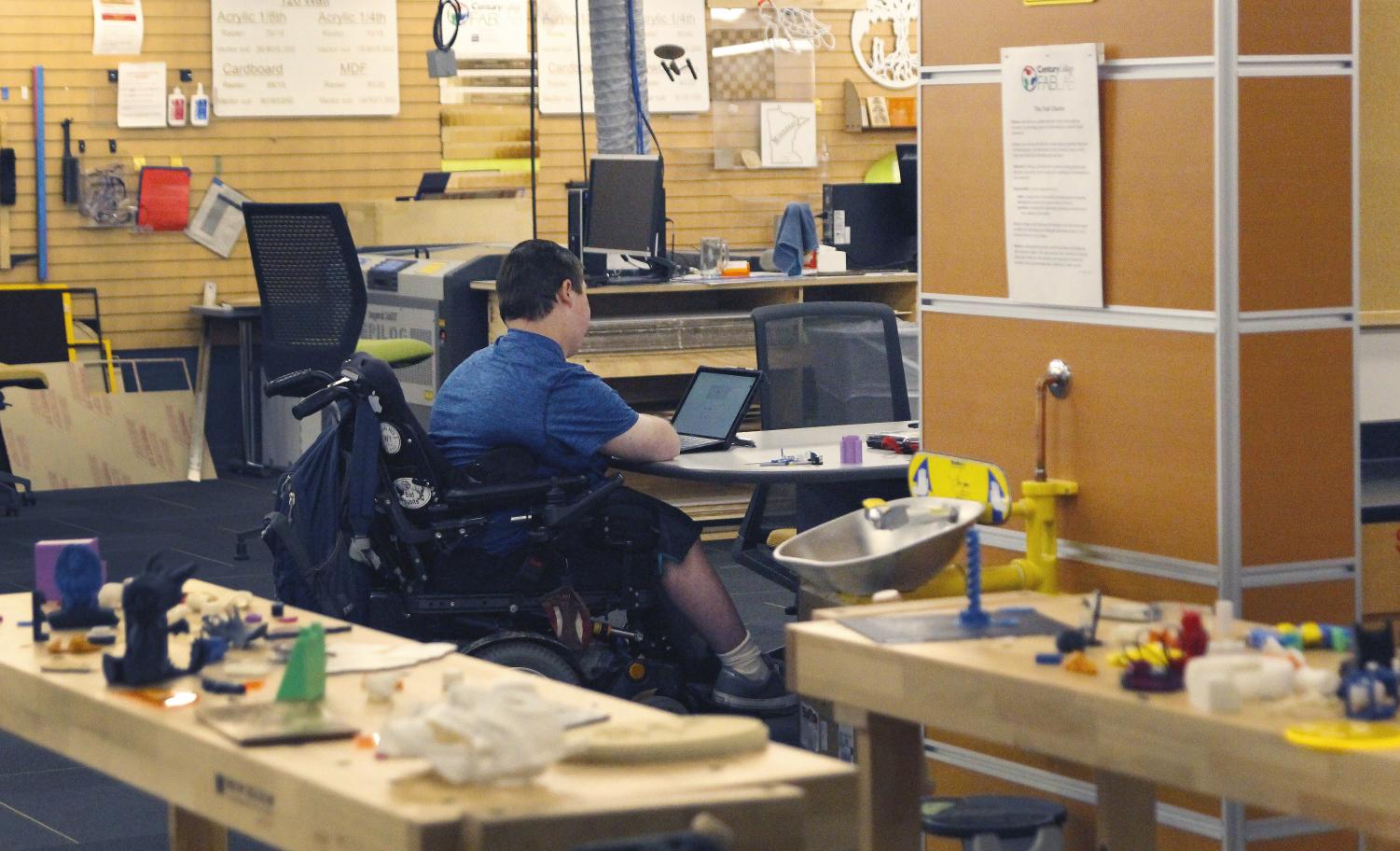Artists of Century, Welcome to the FabLab
April 27, 2020
If you’ve never seen it, the Digital Fabrication Laboratory might sound like a place where mechanical geniuses gather to make high-tech machinery that none of us can understand. While the FabLab can be used for that purpose, its uses branch far wider than giving fledgling engineers a space to test their ideas.
Like many students, I had never set foot inside the FabLab and wasn’t sure what to expect. Jason Huebscher, the FabLab’s manager, toured me through the lab. There’s a woodworking room with several tools and a large workbench, a few 3D printers that work with non-plastic materials, paper cutters, a CO₂ engraver, a sticker maker, a circuit maker, a Kuka, and six small 3D printers that use plastic – each one named after a superhero. Computers line the wall, and there is a table and projector in the middle of the room for collaborative work.
The FabLab is available to any student, staff, or faculty member with a FabLab card, which is available on D2L. Tutorials are available online, and the cost of materials is free… within reason. “If you want to build a full-sized replica of the Titanic, I’ll have to start charging you after the first two panels,” says Huebscher. “Most students will never reach that limit.”
The tour ended at a shelf of small sculptures some students had printed. Our conversation turned to the artistic applications of the FabLab. Huebscher considers all his students to be artists, even though most of them disagree. He sees a beauty in the marriage of mathematics and design to maximize a product’s efficiency. He believes there is an elegance in simplicity – a charm to Ockham’s Razor.
Still, Huebscher hopes that more non-engineering students will use the FabLab. Referring to art students, he says he wants to “get ‘em over here” to take advantage of the machinery.
Students have differing opinions on whether their work in the FabLab is art. Tee Yang, a 3D animation and graphic design major, believes there’s art in the design of everyday objects – for example, the water bottle sitting next to her. Several elements of its design were chosen to make it an attractive product: the smooth and shiny plastic, the way it curves to a hand, and the convenient-to-carry size and weight. Yang believes that everyone working in the FabLab is an artist in some way.
Maggie Koenigs, a freshman orthotics and prosthetics major, disagrees. She doesn’t consider herself an artist, and points out that an object’s aesthetics are often divorced from its function. She believes that engineers and artists must work together to make an attractive product. “Whatever your goal is, it needs to be aesthetically pleasing and serve a purpose. Both are end goals,” she says. Even though Koenigs does not consider her work to be art, she believes the FabLab offers a “cool opportunity” to the artists of Century College: “The sky’s the limit – If you can think it, you can make it!”

